Uncover the enigmatic history of temple prostitution in the Bible, a subject shrouded in controversy and cultural complexity.
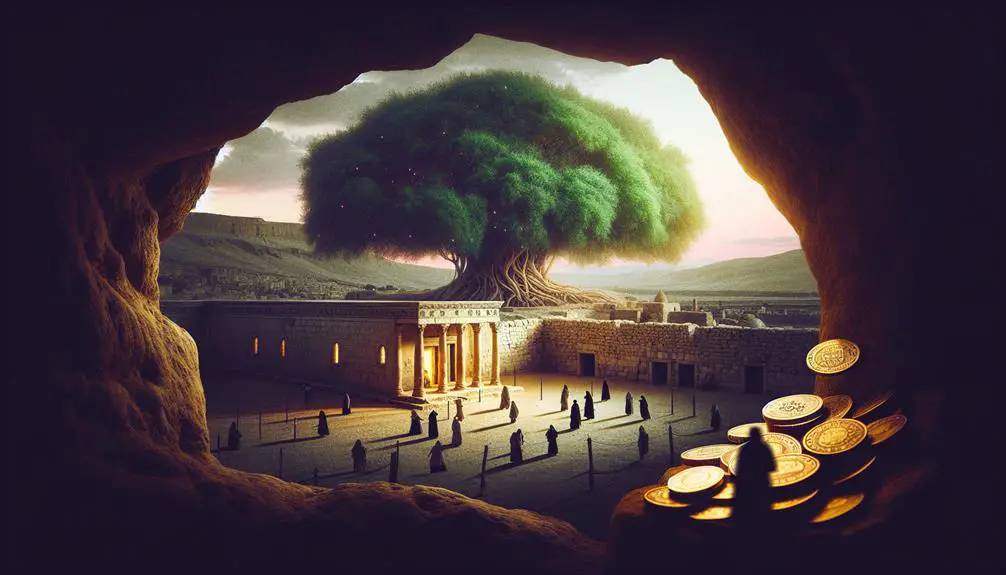
Temple Prostitution in the Bible
As you're likely aware, Rome wasn't built in a day, and similarly, the complex topic of temple prostitution in the Bible can't be fully understood in a single sitting.
You'll find that the historical background intertwines with cultural contexts in ways that challenge modern perceptions. Biblical references to temple prostitution stir up debates over interpretation, ritual significance, and the roles of key figures. Criticism and condemnation from various angles add layers of complexity.
If you're intrigued by how ancient practices are viewed through the lens of modern scholarship and what this reveals about human culture and religious practices, you've got a compelling journey ahead.
Key Takeaways
- Temple prostitution is condemned in the Bible as part of idolatrous worship practices.
- Biblical figures like King David and Solomon are associated with narratives involving temple prostitution.
- The practice played a role in ancient Near Eastern religions, linking the divine with the earthly through rituals.
- Scholarly debates focus on interpreting biblical references within their historical and cultural contexts.
Historical Background
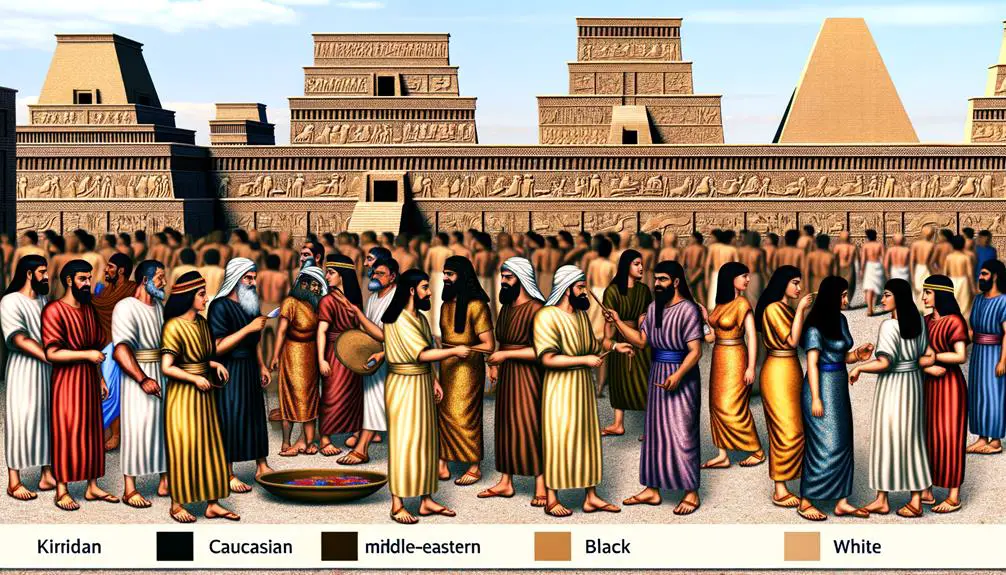
The practice of temple prostitution, deeply entrenched in ancient Near Eastern religions, presents a complex intersection of religious ritual, societal norms, and economic functions. In these cultures, temple prostitution wasn't merely a religious practice but intertwined with the fabric of ancient economies and societal norms, illuminating the multifaceted roles these institutions played in everyday life.
In exploring the historical background of temple prostitution, it becomes clear that this practice served as a bridge between the divine and the mundane, offering insights into the ancient world's social and economic structures. The participation in temple prostitution wasn't seen through the modern lens of morality but rather as a duty to both deity and society, reflecting the prevailing societal norms of the time.
Ancient economies benefited directly and indirectly from temple prostitution. Temples acted as centers of economic activity, with offerings and tributes linked to the practice, contributing significantly to their wealth. This economic function of temple prostitution underpinned its persistence over centuries, demonstrating the practice's integration into the economic fabric of ancient societies.
The societal norms surrounding temple prostitution reveal a complex understanding of sexuality, divinity, and economic necessity. These norms dictated the acceptance and regulation of temple prostitution, framing it as an essential aspect of religious and social life. Through this lens, you're able to grasp the depth of its role beyond the surface-level understanding of its religious connotations, delving into its economic implications and societal acceptance.
Biblical References
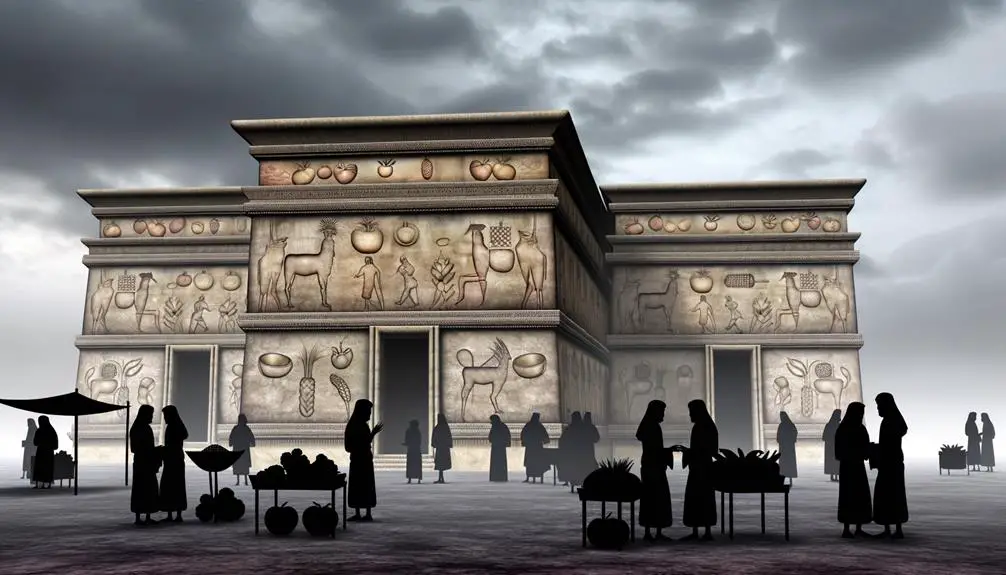
Having explored the historical and societal backdrop of temple prostitution, let's now examine its depiction within biblical texts, where it's often condemned or critiqued. The nuanced translations of ancient texts reveal a complex understanding of this practice, highlighting the importance of interpreting these references with care.
For instance, the Hebrew term 'qedeshah,' often translated as 'temple prostitute,' appears in several biblical passages. However, translation nuances suggest that this term mightn't always refer to ritualized prostitution but could instead denote a 'consecrated woman.' Such subtleties indicate the difficulty in understanding the exact nature of the practices being referenced.
Moreover, the Bible's denunciation of temple prostitution often corresponds with its criticism of idolatrous worship, particularly in contexts involving Canaanite deities. This association suggests that the condemnation may be more about the worship of foreign gods than the act of prostitution itself. Geographic discrepancies in the biblical narrative further complicate our understanding. Practices described in one region or period aren't necessarily indicative of widespread acceptance or rejection across all of ancient Israel and Judah.
Deuteronomy 23:17-18 and 1 Kings 14:24 are among the texts that explicitly mention these practices, offering insight into how they were viewed within the broader religious and moral framework of the time. Yet, the lack of detailed descriptions and the potential for translation errors caution against drawing definitive conclusions.
In analyzing these biblical references, it's crucial to approach them with an awareness of the translation nuances and geographic discrepancies that may influence our understanding. This careful consideration ensures a more accurate interpretation of ancient texts and their reflections on temple prostitution.
Cultural Context
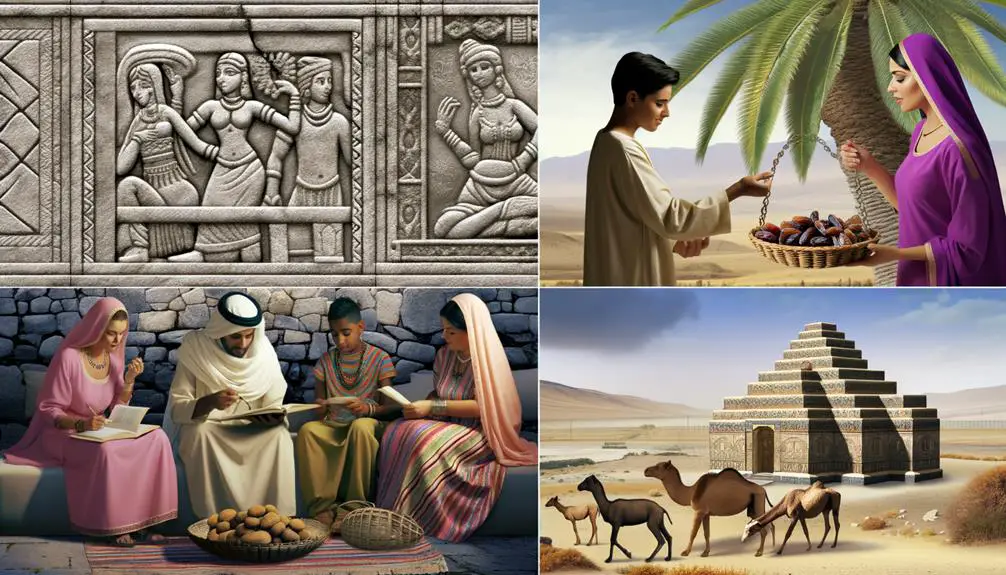
To fully grasp the significance of temple prostitution within ancient societies, it's essential to delve into the cultural context surrounding these practices. Analyzing the social norms and economic impacts of these traditions offers a clearer understanding of why they were integrated into religious and daily life.
- Social Integration: Temple prostitution wasn't merely a religious ritual; it was deeply embedded within the social fabric. This practice was often seen as a form of service to the deity, intertwined with social norms and expectations. Participants, both male and female, weren't marginalized but could hold positions of respect and influence within their communities.
- Economic Structures: The economic implications of temple prostitution were significant. Temples acted as economic centers, and the offerings and donations received in connection with these practices contributed to the financial stability of the religious institution and, by extension, the broader community.
- Religious Authority and Power Dynamics: The practice underscored the authority of the temple and its clergy, who often controlled the economic gains. This control reinforced their power and influence over both political and social spheres.
- Cultural Significance and Identity: Temple prostitution was a marker of cultural identity for many ancient societies. It illustrated a distinct set of beliefs about fertility, prosperity, and divine favor, setting communities apart from their neighbors with different religious practices.
Understanding these elements sheds light on the complex interplay between religion, economy, and society in ancient times, revealing that temple prostitution was more than a religious anomaly; it was a reflection of the intricate web of social norms and economic impacts that defined ancient civilizations.
Ritual Significance
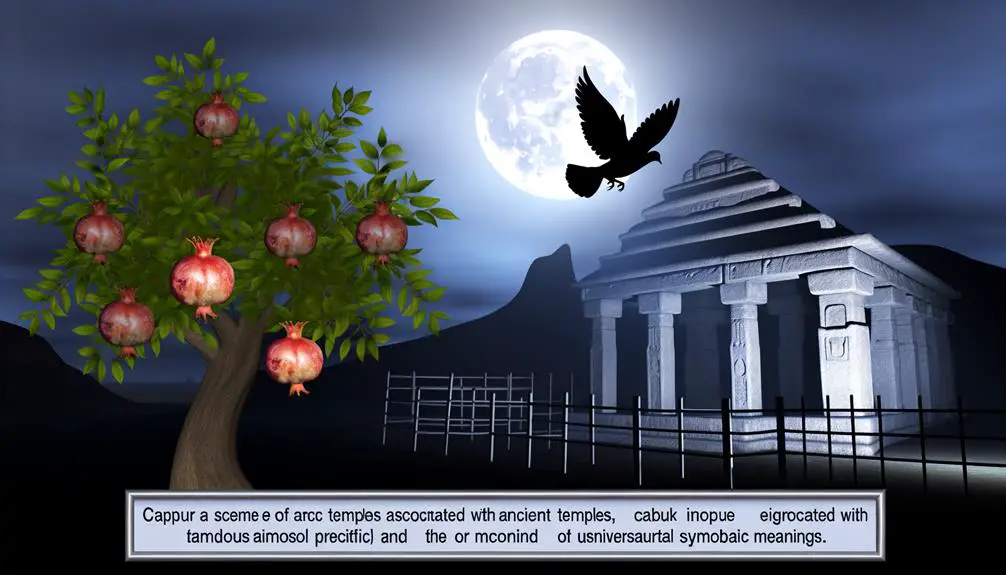
Why did ancient societies imbue temple prostitution with profound ritual significance? At its core, this practice was deeply entwined with the religious and cosmological beliefs of the time, serving as a vital component in connecting the divine with the earthly. You'll find that temple prostitution, often misunderstood, was a complex ritual that transcended mere physical acts to embody the sacred union between gods and humans, a concept central to many ancient religions.
Temple prostitution's significance was notably anchored in divine marriages and fertility rites. Divine marriages, or hieros gamos, were ceremonial unions between a deity and a human, often represented by priests or temple prostitutes. These sacred rituals were believed to ensure the gods' favor, bringing prosperity, fertility, and stability to the community. The act was symbolic, a physical manifestation of the spiritual marriage between the divine masculine and feminine, thought to harmonize cosmic and earthly energies.
Similarly, fertility rites were integral to these practices, reflecting the agrarian societies' reliance on the cycles of nature for survival. Through sexual union, participants aimed to mimic and encourage the fecundity of the earth, invoking divine assistance for abundant harvests and the prosperity of their communities. These rites underscored the belief in the generative power of the divine, embodied through temple prostitution.
In analyzing temple prostitution's ritual significance, it's crucial to understand its role in expressing and facilitating the sacred connections between the divine and the mundane. These practices weren't merely transactional or profane; they were imbued with deep spiritual meaning, reflecting the ancient societies' intricate beliefs about the cosmos, fertility, and the divine's presence in their lives.
Key Biblical Figures
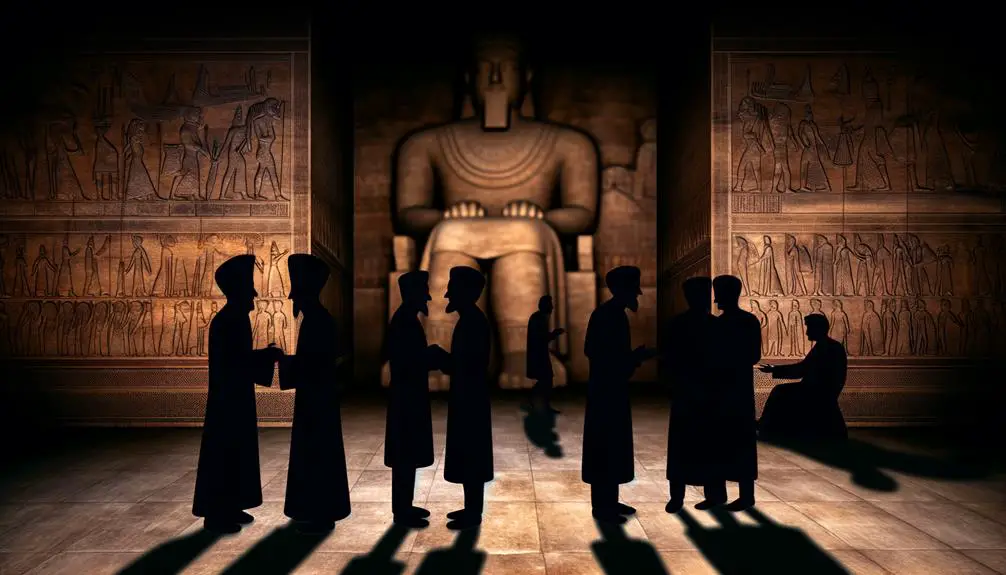
Within the biblical narrative, several key figures emerge as emblematic of the complex interplay between religious practices and societal norms, including the contentious issue of temple prostitution. These individuals, often kings or prophets, navigate the challenges of adhering to their faith while managing the external influences and internal pressures of their time. Their actions and decisions provide a lens through which to explore the multifaceted relationship between religion, morality, and politics in ancient Israel.
- King David: Known for his deep faith and moral struggles, King David's morality is tested through his reign. His dedication to Yahweh contrasts with the cultural practices of surrounding nations, including temple prostitution. Yet, his personal failings highlight the tension between cultural norms and religious ideals.
- Solomon: Famous for his wisdom, Solomon's alliances through marriage to foreign princesses introduce foreign gods and potentially associated practices, such as temple prostitution, into Israel. His reign exemplifies the struggle to maintain religious purity in the face of political expediency and cultural exchange.
- The Prophets: Figures like Hosea and Ezekiel use the metaphor of prostitution to critique Israel's infidelity to God, likening the nation's worship of foreign deities and possibly engaging in illicit religious practices to a spouse's betrayal.
- Reformers: Kings such as Josiah implement reforms to purify worship practices, directly confronting and attempting to eradicate any form of cultic prostitution, emphasizing a return to monotheistic worship.
These figures collectively underscore the Bible's nuanced examination of the intersection between faith, leadership, and moral integrity in the context of temple prostitution and other religious practices.
Criticism and Condemnation

Having explored the roles of key biblical figures in relation to temple prostitution, we now turn our attention to the broader societal and religious responses, particularly the criticism and condemnation this practice elicited within ancient Israelite society. The ethical implications of temple prostitution were significant, as it not only conflicted with emerging monotheistic religious norms but also with evolving societal values that emphasized familial fidelity and personal morality.
The condemnation of this practice in biblical texts reflects a broader critique of idolatry and associated rituals deemed incompatible with the worship of Yahweh. Prophetic literature, in particular, employs vivid imagery and harsh language to denounce these practices, positioning them as a betrayal of the covenant between God and Israel. This critical stance underscores a fundamental shift in religious and ethical perspectives, highlighting the tension between traditional polytheistic practices and the emerging monotheistic worldview.
The contemporary relevance of this criticism lies in its reflection on the dynamics of cultural and religious transformation. It prompts us to consider how societies renegotiate moral and ethical boundaries in response to evolving religious identities. Furthermore, it invites a re-examination of the ways in which religious texts are interpreted and employed to navigate complex issues of morality, societal norms, and cultural change.
In essence, the criticism and condemnation of temple prostitution within biblical texts offer a window into the moral and religious upheavals that shaped ancient Israelite society. These narratives invite ongoing scholarly engagement, challenging us to consider the multifaceted implications of religious reform and ethical evolution both in ancient contexts and in contemporary discourse.
Modern Interpretations

In modern scholarship, interpretations of temple prostitution in biblical texts have evolved, reflecting broader changes in cultural and academic perspectives. You're now faced with a landscape where scholars question previous assumptions, delve into the nuances of ancient practices, and consider the ethical implications and societal perceptions tied to these interpretations. This shift has led to a more complex understanding of what temple prostitution entailed and its role within ancient societies.
To paint a clearer picture, consider the following key points:
- Reevaluation of Sources: Scholars have become more critical of the primary sources, questioning the accuracy and context of ancient texts that mention temple prostitution. This skepticism encourages a reexamination of historical evidence and a move away from accepting ancient biases at face value.
- Cultural Contextualization: There's an increased effort to understand temple prostitution within the cultural and religious contexts of the time. This approach helps to avoid anachronistic judgments based on modern ethical standards and societal norms.
- Focus on Gender and Power Dynamics: Modern interpretations often explore the gender dynamics and power relations involved in temple prostitution, offering insights into the status and agency of individuals involved.
- Ethical Implications: Scholars are now more attentive to the ethical implications of their interpretations, particularly how they might reflect or perpetuate contemporary biases and misunderstandings about sex work and religious practices.
These shifts in scholarly approach don't only enrich our understanding of ancient practices but also challenge you to consider how current societal perceptions influence the interpretation of historical evidence. This analytical journey underscores the importance of continuously questioning and refining our understanding of the past.
Scholarly Debates
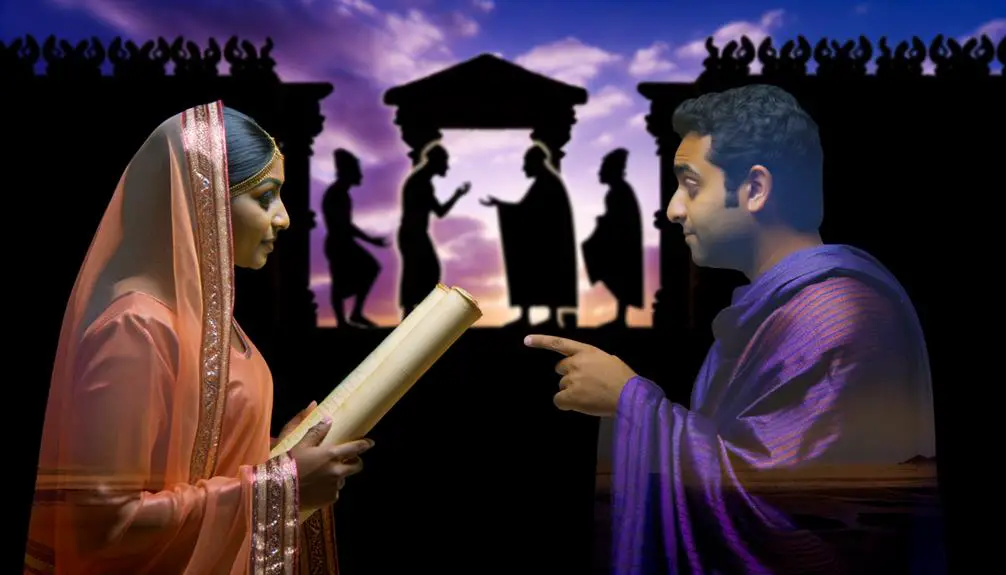
Reflecting on the nuanced perspectives of modern scholarship, it's crucial to explore the ongoing debates among scholars regarding the nature and extent of temple prostitution in ancient civilizations. These debates not only illuminate the historical realities but also underscore the ethical implications and methodological challenges inherent in understanding such a complex phenomenon.
Scholar |
Position |
Key Arguments |
|---|---|---|
A. Smith |
Supportive |
Argues that textual and archaeological evidence strongly supports the existence of temple prostitution in certain regions. |
B. Jones |
Skeptical |
Questions the interpretation of evidence, suggesting that what has been labeled as temple prostitution might have been a misinterpretation of ritualistic activities. |
C. Lee |
Critical |
Highlights the ethical implications of projecting modern moral judgments onto ancient practices and cautions against oversimplification. |
D. Patel |
Methodological |
Focuses on the methodological challenges in distinguishing between sacred sexual rites and what could be termed as prostitution. |
E. Zhang |
Interdisciplinary |
Advocates for an interdisciplinary approach, combining textual analysis with anthropological insights to gain a fuller understanding of the practice. |
Scholars like A. Smith argue that evidence points to the existence of temple prostitution, while B. Jones raises doubts about the interpretation of such evidence. C. Lee's critique emphasizes the importance of avoiding modern biases in historical analysis, and D. Patel brings to light the difficulties in clearly defining what constitutes temple prostitution. E. Zhang's call for interdisciplinary methods suggests a way forward in tackling the complexities of this issue. This overview shows that the debates are far from settled, highlighting the ongoing need for careful and nuanced research in this area.
Frequently Asked Questions
How Did Temple Prostitution Influence the Economic Structure of Ancient Societies Where It Was Practiced?
You're exploring how ancient societies' economies were impacted by specific practices.
In these societies, temple earnings, including agricultural offerings, significantly contributed to their economic structure. Such practices also facilitated military funding, ensuring the defense and expansion efforts were well-supported.
This economic model, relying on both spiritual and practical contributions, intertwined religious practices with societal sustenance and growth, demonstrating a complex relationship between faith, economy, and governance.
In What Ways Did Temple Prostitution Impact Gender Roles and the Status of Women Within Those Ancient Communities?
You're exploring how temple prostitution affected gender roles and women's status in ancient communities.
It's crucial to understand that religious interpretations and societal perceptions intertwined, deeply influencing these aspects. This practice often positioned women in complex social roles, simultaneously revered and marginalized.
Analyzing this reveals a nuanced impact: while providing certain women with a unique societal status, it also reinforced gender-based disparities, reflecting broader themes of power and inequality in those societies.
Are There Any Documented Psychological Effects on Individuals Who Were Involved in Temple Prostitution, Based on Historical Records or Modern Interpretations?
You're delving into the mental effects on individuals engaged in ancient sacred services.
While direct historical records are sparse, modern interpretations suggest these roles could either bolster mental resilience or exacerbate stress, depending on cultural perceptions and personal experiences.
Analyzing these aspects objectively, scholars infer that societal views profoundly impacted individuals' psychological well-being, with some finding a sense of purpose and others, unfortunately, facing significant psychological burdens.
How Did Temple Prostitution Practices Vary Across Different Religions and Geographical Locations Outside of the Biblical Context?
You're looking into how temple prostitution practices varied across different religions and geographical locations.
It's crucial to note that ritual significance and cultural perceptions shaped these practices uniquely worldwide.
While some societies saw it as a divine act, intertwining sexuality with spirituality, others viewed it through a more pragmatic lens, often influenced by economic or social factors.
This diversity reflects the complex interplay between religion, culture, and human sexuality throughout history.
Has Temple Prostitution Left Any Lasting Legacies or Influences on Contemporary Religious Practices or Societal Norms?
You might find it intriguing that while direct practices of temple prostitution are largely extinct, their shadows linger in modern legislation and cultural festivals.
For instance, certain laws regarding sex work and religious freedom trace roots back to ancient norms. Moreover, some cultural festivals retain elements symbolizing fertility and prosperity, reminiscent of historical religious rites.
These legacies, though evolved, highlight the complex intertwining of ancient practices with contemporary societal norms.
Conclusion
In conclusion, you've ventured through an epic saga where the ancient practice of temple prostitution in the Bible wasn't just a footnote but a thunderous echo through time. This wasn't merely about rituals; it was the cosmic clash between divine command and human impulse, painted across the canvas of history.
Scholars have tirelessly deciphered these narratives, revealing a complex tapestry of beliefs, ethics, and societal norms. You've peered into the abyss of antiquity, where every verse and critique holds worlds, challenging modern perceptions and inviting a profound reevaluation of sacred texts.

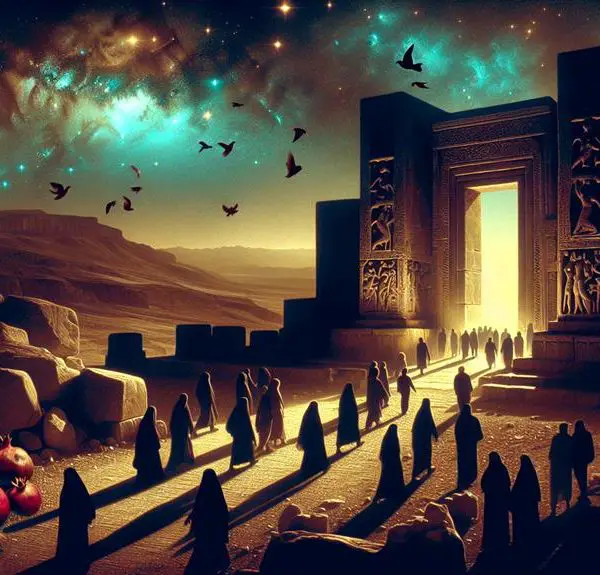
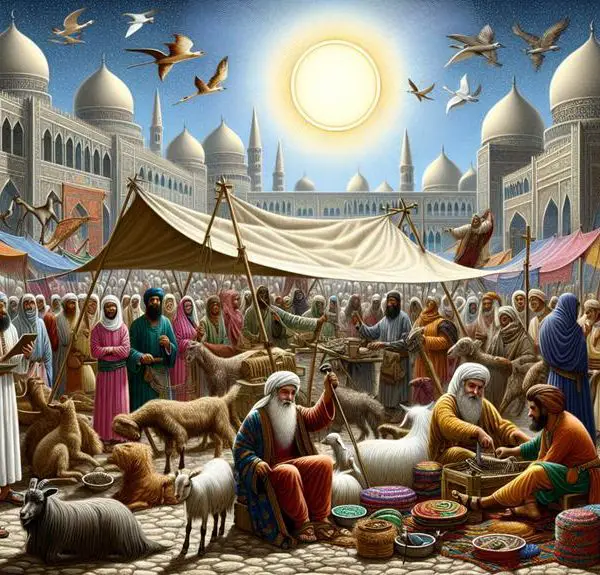
Sign up